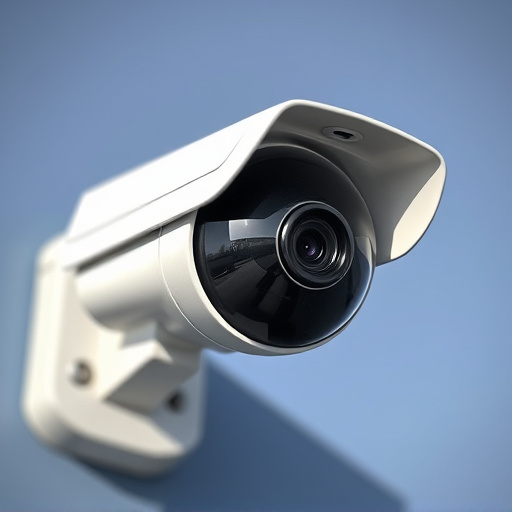To install an outdoor dummy camera, follow these steps: assess location for visibility and network connectivity, mount at eye level using sturdy brackets, connect to security system or NVR, test functionality including night vision, maintain regularly. This strategic process enhances property security by deterring intruders through clear visual coverage.
“Elevate your home security with professional-grade dummy security equipment, specifically designed to deter potential intruders. This comprehensive guide delves into the intricacies of outdoor dummy camera installation, offering a step-by-step approach for optimal protection. From understanding the advanced features of these devices to preparing your outdoor space, we navigate the process, ensuring you’re equipped with the knowledge for a successful Outdoor Dummy Camera Installation Steps. Enhance your security and peace of mind today.”
- Understanding Professional Grade Dummy Security Equipment
- Preparing for Outdoor Dummy Camera Installation
- Step-by-Step Guide to Installing an Outdoor Dummy Camera
Understanding Professional Grade Dummy Security Equipment
Professional-grade dummy security equipment, such as outdoor dummy cameras, are designed to deter potential intruders and offer a layer of protection for your property. These devices are an essential component in home or business security systems, providing a visible deterrent to crime. Unlike traditional security cameras that record footage, dummy cameras serve as a strategic visual tool to make would-be thieves think twice before attempting any malicious activities.
To set up an outdoor dummy camera, follow these simple steps: first, select a location with clear visibility and within range of your network connection. Ensure it’s positioned high enough to deter easy tampering or destruction. Next, secure the camera using sturdy brackets or mounts. Positioning the camera at eye level mimics real surveillance, making it more effective as a deterrent. Finally, connect the camera to your security system or NVR (Network Video Recorder) for monitoring and recording purposes.
Preparing for Outdoor Dummy Camera Installation
Before installing an outdoor dummy camera, it’s essential to prepare your location for optimal security and visual coverage. Start by assessing the environment where you’ll place the device. Look for any potential obstacles like trees or buildings that might obscure its view. Ensure the area has adequate lighting; this not only aids in clear image capture but also acts as a deterrent to would-be intruders.
Follow these outdoor dummy camera installation steps: choose a strategic spot, ensuring it’s visible and accessible for monitoring. Mount the camera securely on a sturdy surface, keeping it away from reach to prevent tampering. Test the camera’s functionality, including its night vision capabilities, to ensure it meets your security needs. Regular maintenance is key; keep an eye out for any debris or damage that might require cleaning or repairs.
Step-by-Step Guide to Installing an Outdoor Dummy Camera
Installing an outdoor dummy camera is a straightforward process that can significantly enhance your property’s security. Here’s a step-by-step guide to ensure a successful setup:
1. Choose a Suitable Location: Select a spot where you want to install the camera, ensuring it has a clear view of the area you wish to monitor. Consider factors like lighting, proximity to potential entry points, and the camera’s field of vision. Ensure it’s placed high enough to avoid obstruction but not so high that it cannot capture readable footage.
2. Unbox and Inspect: Once you’ve selected the location, carefully unbox your dummy camera. Check all components for any damage during transit. Gather all necessary accessories—mounting hardware, cables, power adapters, and instruction manual—before proceeding.
3. Mount the Camera: Secure the camera to a solid surface using the provided hardware. This could be a wall or a pole, depending on your preference and the camera’s design. Ensure the mounting is sturdy enough to withstand outdoor conditions and potential tampering attempts.
4. Connect Power and Data Cables: Plug in the power adapter and connect any data cables (often USB) as per the manual’s instructions. Test the camera’s power and image feed to ensure they function correctly before moving on.
5. Configure Settings: Access the camera’s settings to adjust parameters like resolution, motion detection sensitivity, and recording modes. Ensure these align with your security needs. Some models offer mobile app integration for remote access and control. Set up this connection following the manufacturer’s guidelines.
6. Test the System: With everything installed and configured, test the system thoroughly. Trigger simulated motion or manually adjust settings to ensure accurate recordings and alerts. Check that footage is clear and saved correctly, confirming your camera’s effectiveness in deterring potential intruders.
Professional-grade dummy security equipment, particularly outdoor dummy cameras, offer a cost-effective way to enhance home security. By following the detailed steps outlined in this guide, from understanding the hardware to installation and setup, you can effectively navigate the process of installing an outdoor dummy camera. Remember that proper preparation and careful consideration will ensure a successful Outdoor Dummy Camera Installation Steps, providing peace of mind and a safer environment for your property.
